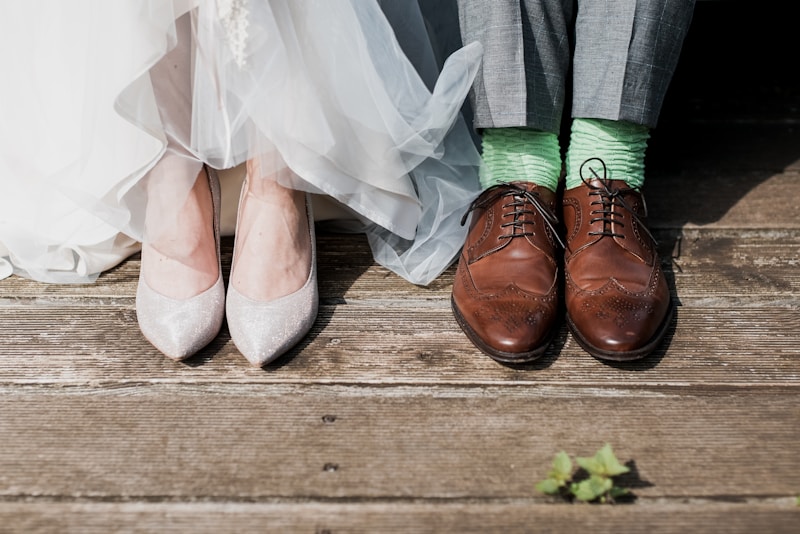Perfecting Your Wedding Dress Fit: A Comprehensive Guide
Finding the perfect wedding dress is one of the most exciting parts of wedding planning. However, even the most beautiful dress can disappoint if it doesn’t fit right. Perfecting your wedding dress fit is essential to ensure you not only look amazing but also feel comfortable on your special day. This article will guide you through everything you need to know about achieving the perfect fit for your wedding dress.
The Importance of Fit
When it comes to bridal fashion, the fit is critical. A well-fitted wedding dress enhances your shape and highlights your best features. In contrast, an ill-fitting gown can detract from your overall look and make you feel self-conscious. A perfect fit allows you to move gracefully, dance freely, and enjoy every moment of your wedding day.
Common Fit Issues
Before we dive into how to perfect your wedding dress fit, let’s discuss common issues brides might encounter:
- Too Tight or Too Loose: This is the most common issue, which can be uncomfortable and unflattering.
- Gaping: Gaping at the bust or waist can create an unappealing silhouette.
- Length Problems: Whether it's too long or too short, the right length is essential for your comfort.
- Alteration Challenges: Some dresses are easier to alter than others, and understanding this can save you time and money.
Finding the Right Size
The first step in perfecting your wedding dress fit is finding the right size. Keep in mind that bridal sizing can be different from your usual clothing size. Here are some tips for getting accurate measurements:
- Visit a Professional: Getting measured by a professional can ensure accuracy.
- Use a Measuring Tape: Measure your bust, waist, and hips, and take note of the measurements.
- Consider Your Undergarments: Wear the undergarments you plan to wear on your wedding day during fittings to get a realistic fit.
Choosing the Right Style
Different dress styles fit differently. It’s crucial to consider how different silhouettes will flatter your body shape. Here are some popular styles to consider:
| Style | Body Type | Features |
| A-Line | All Body Types | Flattering fit that emphasizes the waist |
| Mermaid | Hourglass | Hugs the body until the knee, flaring out |
| Ball Gown | Pear Shape | Full skirt, draws attention to the waist |
| Sheath | Petite | Streamlined and elegant silhouette |
Consider Different Fabrics
The fabric of your wedding dress can also affect the fit. Heavier fabrics like satin may require more precise tailoring than lighter fabrics like chiffon. It's essential to choose a fabric that feels good on your skin and drapes well for the intended style.
The Tailoring Process
Once you have selected your dress, the real work begins. Tailoring is one of the most crucial aspects of achieving the perfect fit for your wedding dress:
- Start Early: Begin the alteration process at least six weeks before your wedding.
- Choose Skilled Professionals: Look for experienced tailors who specialize in formalwear or bridal gowns.
- Communicate Clearly: Make sure to express your concerns and features you want to highlight or minimize.
Types of Alterations
Understanding the types of alterations that can be made to your dress can simplify your decision-making process:
- Taking In/Letting Out: Adjusting the overall width of the dress.
- Hemming: Changing the length of the gown.
- Adjusting Straps: Ensuring the dress stays in place.
- Bustle Creation: For the reception, a bustle is often added to allow the train to be pinned up.
Dress Fitting Tips
Here are some additional tips to ensure your dress fits perfectly:
- Bring Your Shoes: Always wear the shoes you plan to wear on the big day during your fittings.
- Stay Hydrated: Your body can change due to hydration levels; keep this in mind when trying on dresses.
- Practice Moving: Make sure to test the dress while walking, sitting, and dancing.
Final Touches
As your wedding day approaches, schedule a final fitting close to the date. This fitting will allow you to see how the dress falls and fitting adjustments can be made if necessary. It’s best to be as close to your wedding weight as possible for this fitting.

Special Considerations for Plus-Size Brides
Perfecting the fit for plus-size brides requires special attention. Opt for dresses designed for curvier figures that compliment your shape. Additionally, custom alterations can be the key to a flattering fit, so don’t hesitate to seek out designers who specialize in plus-size gowns. Remember, every bride deserves to feel wonderful on her wedding day, regardless of size.
Emotional Readiness
Sometimes, the stress of wedding planning can overshadow the joy of the experience. Make sure to take breaks, enjoy leisure activities, and surround yourself with supportive friends or family during fittings. Let this process be an unforgettable part of your wedding journey.
Conclusion
Perfecting your wedding dress fit involves careful consideration of size, style, fabric, and professional alterations. This process might seem daunting, but with the right mindset and professionals at your side, your beautiful gown will fit like a glove. Remember to give yourself ample time for alterations and final fittings to ensure that you will shine on your special day.
In summary, the key factors to perfect your wedding dress fit include understanding your body shape, making appropriate measurements, choosing the right style, and working with skilled tailors. Remember to take the time to enjoy the process; after all, this is a beautiful chapter in your life. Your wedding dress is not only a fashion statement but also an embodiment of the love and commitment you are celebrating.